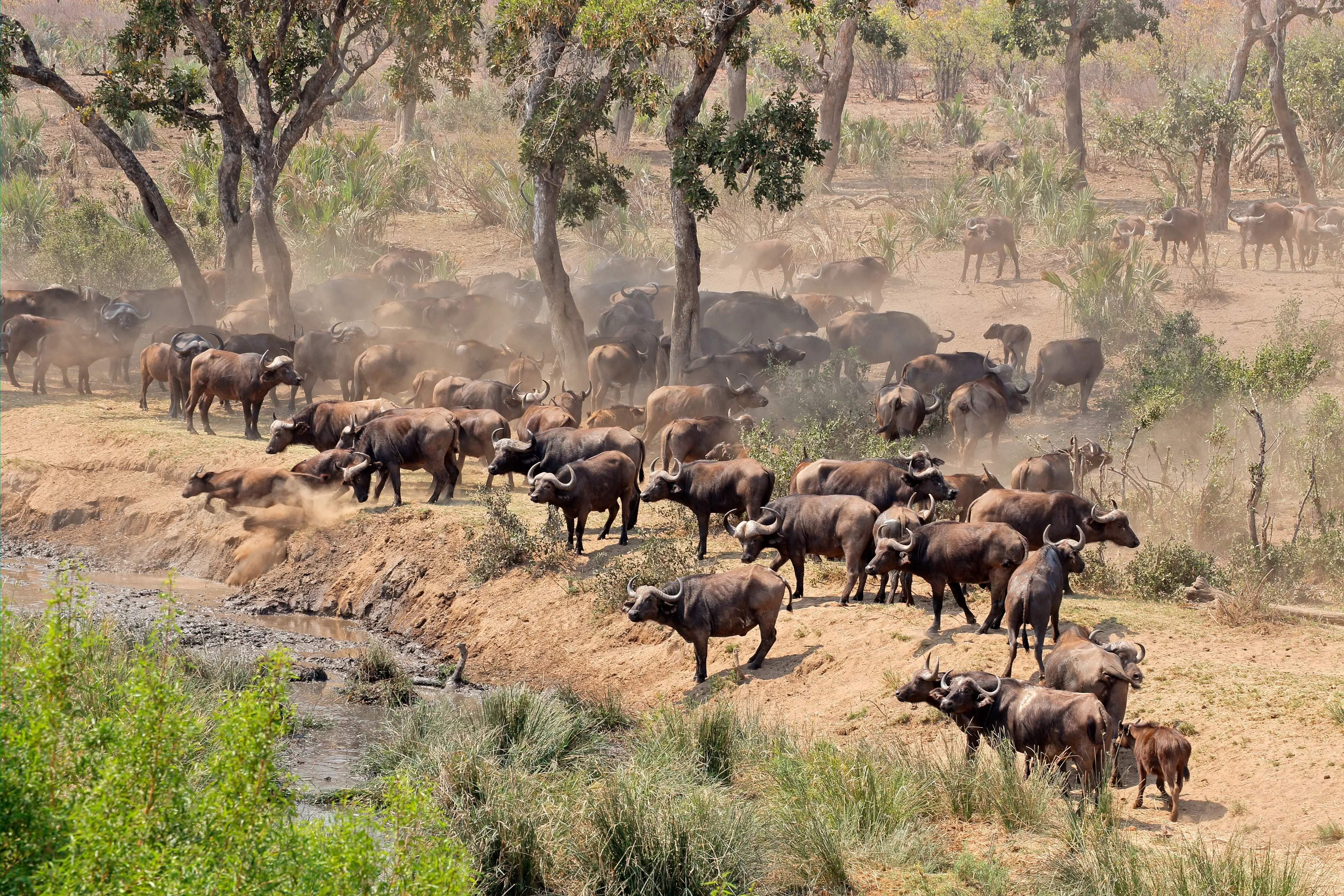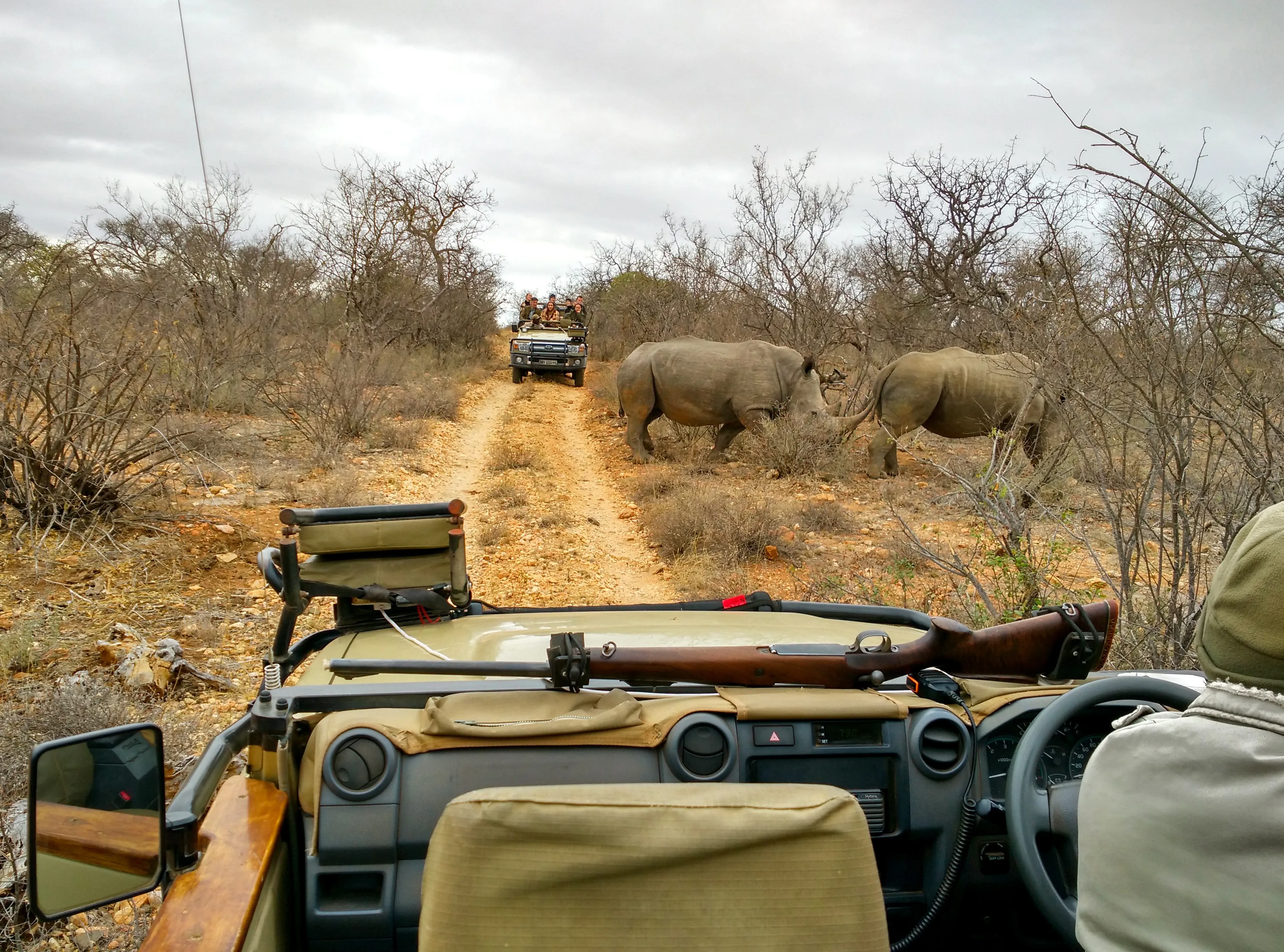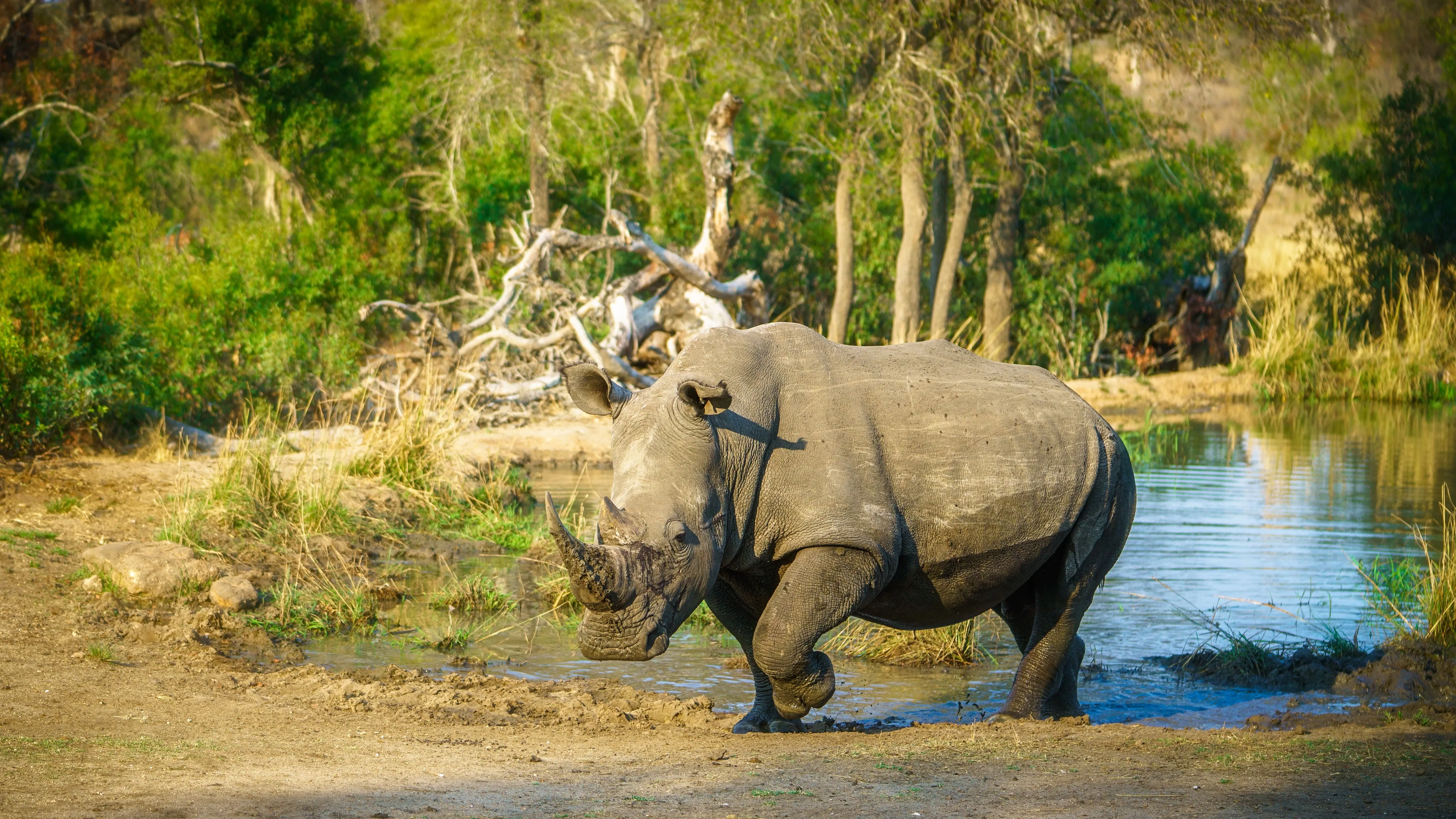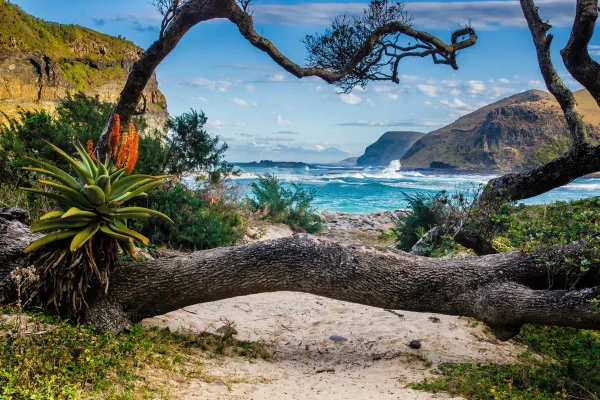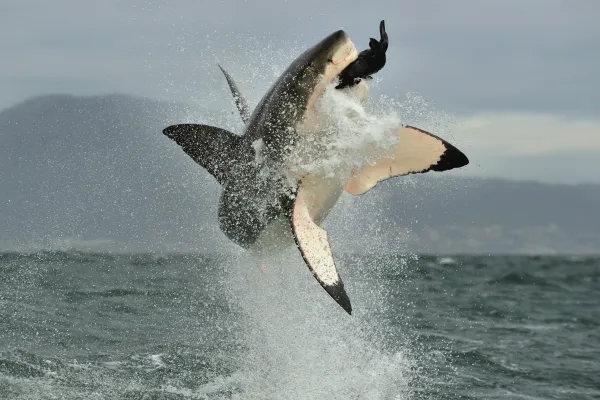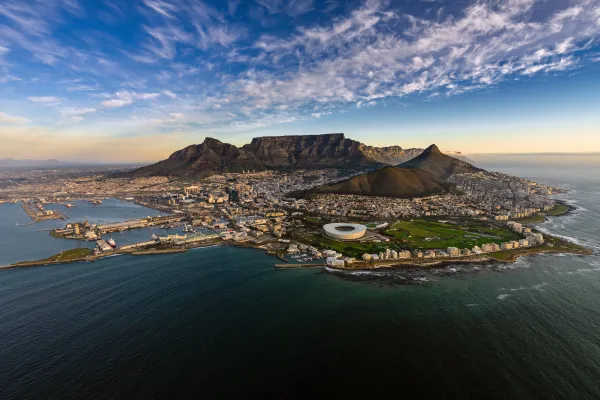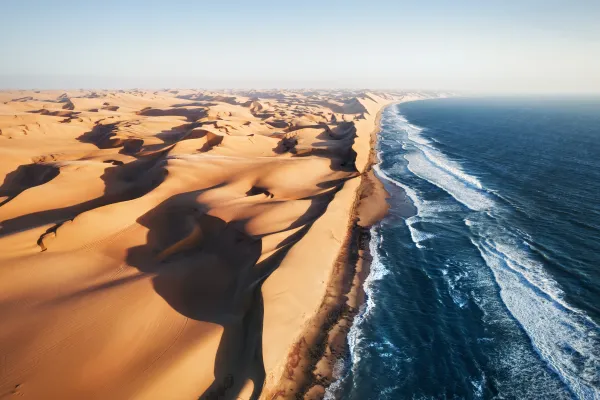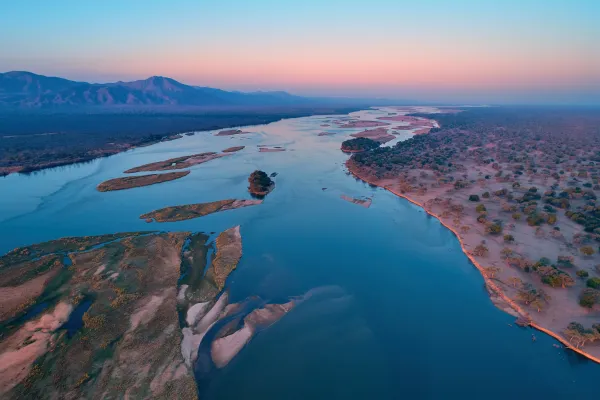Kruger National Park, South African
There are not many places where you have the chance to see the famed African Big 5 in one day. These animals – leopards, buffaloes, elephants, lions, and rhinos – are among the planet's most impressive and fascinating species. Apart from African buffaloes, they are also all endangered and found collectively in only a few places on the continent. One of these is Kruger National Park – South Africa’s largest and most renowned national park.
In this wild corner of the world, it is possible to see massive herds of buffalo grazing in the sunrise light, spy a covert rhino in the bush in the morning, and have an elephant amble past your car before noon. The park’s cats, particularly leopards, are more elusive. You will most likely spot them at dusk or after dark falls, when their gleaming eyes give them away. However, lions are opportunistic feeders and love dozing in the sun, so catching a glimpse of them by daylight is not uncommon. A trip to South Africa is not complete without a visit to this untamed hub of biodiversity.
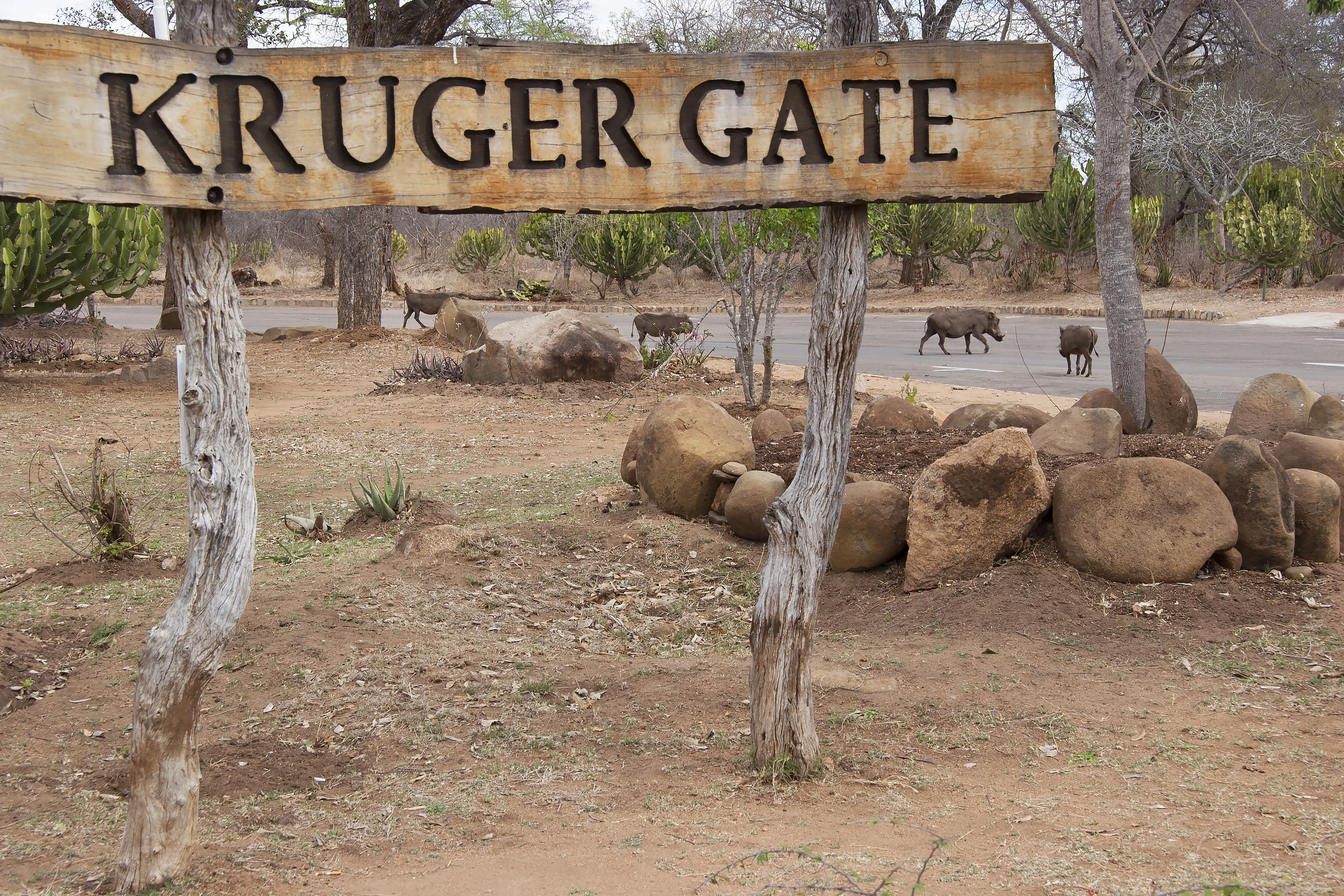
The Kruger Park offers visitors unlimited chances to see and experience the fauna and flora of northern South Africa. The reserve was established in 1898 by the president of the Transvaal, Paul Kruger. He aimed to protect the wildlife in the region between the Sabie and Crocodile rivers. Initially, the park was called Sabie Park and allowed restricted game hunting. After the proclamation of the National Parks Act in 1927, the Sabie and the Shinwezi game reserves merged to form the Kruger Park.
Sprawling over 19,000-plus square kilometres from northeastern South Africa to the Mozambique border, the park is home to more than 750 wildlife species and nearly 2,000 plant species. Kruger is known worldwide for its beauty and wildlife; however, it is also a cultural and historical hub. It encompasses over 150 cultural heritage sites and 130 rock art sites.
These include stone-age archaeological sites dating back to between thirty to a hundred thousand years ago that show evidence of human habitation.
»The Kruger National Park is the window through which the world can look into the soul of Africa.«
Nature and wildlife in the Kruger
The Kruger Park has a permanent water supply from six main rivers that run through it, as well as their tributaries. These waterways are essential for maintaining and sustaining the park’s wildlife and natural habitats. The park encompasses six ecosystems - baobab sandveld, Lebombo knobthorn-marula bushveld, mixed acacia thicket, combretum-silver cluster leaf, woodland on granite, and riverine forest. Besides teeming herds of larger wildlife species, there are also myriad other animal species. These include dung beetles, termites, spiders, snakes, and the birds that feed on them.
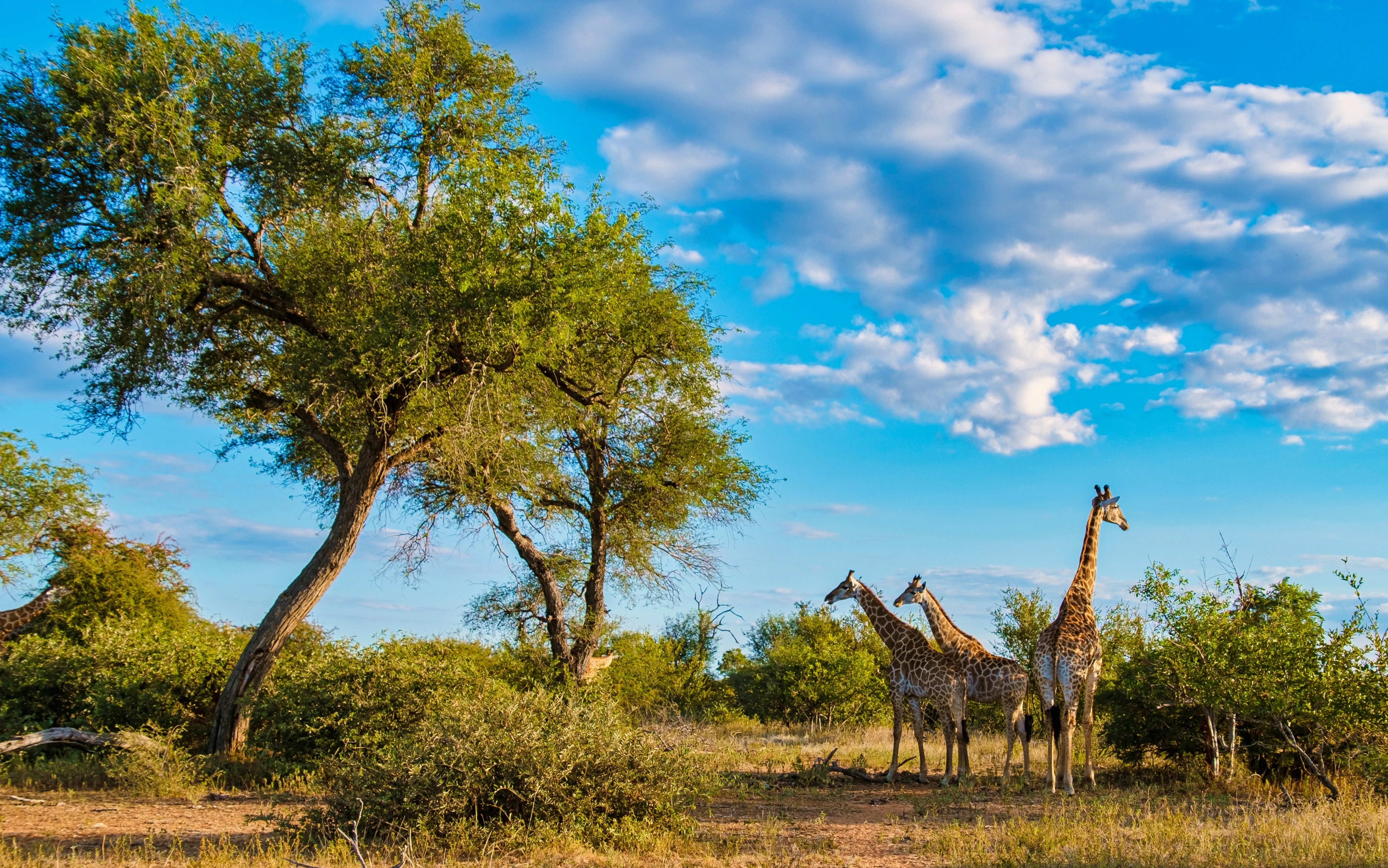
Fauna
Kruger’s incredible biodiversity is one of the main reasons it is ranked as a top African safari option. The Big 5 have gained notoriety since the early 1900s, when they were first recognised as the most dangerous animals to hunt. However, besides these famous wildlife icons, over 140 other mammal species animals are present in the park. In fact, it is home to a greater number of large mammal species than any other African game reserve. Additionally, it has 116 reptile types, 34 amphibian species, over 500 different bird species, and 49 fish species. The park has set up a network of webcams to observe the animals and provide online safari experiences.
The Big 5 aside, Kruger is also an outstanding bird-watching spot (Link?), with a designated ‘Avian Big 6’. These species constitute some of the park’s most intriguing and vulnerable birds. Lappet-faced vultures, martial eagles, saddled-billed storks, kori bustards, and reclusive Pel's fishing owls are among its many avian residents. One of the park’s lesser-known attractions is its 200-plus butterfly and moth species. Particularly notable are the mopane moths found in the park's northern area. These worms are extremely rich in nutrients, and local communities consider them a delicacy. Additionally, locals have recently begun farming mopane silk, a promising new industry.
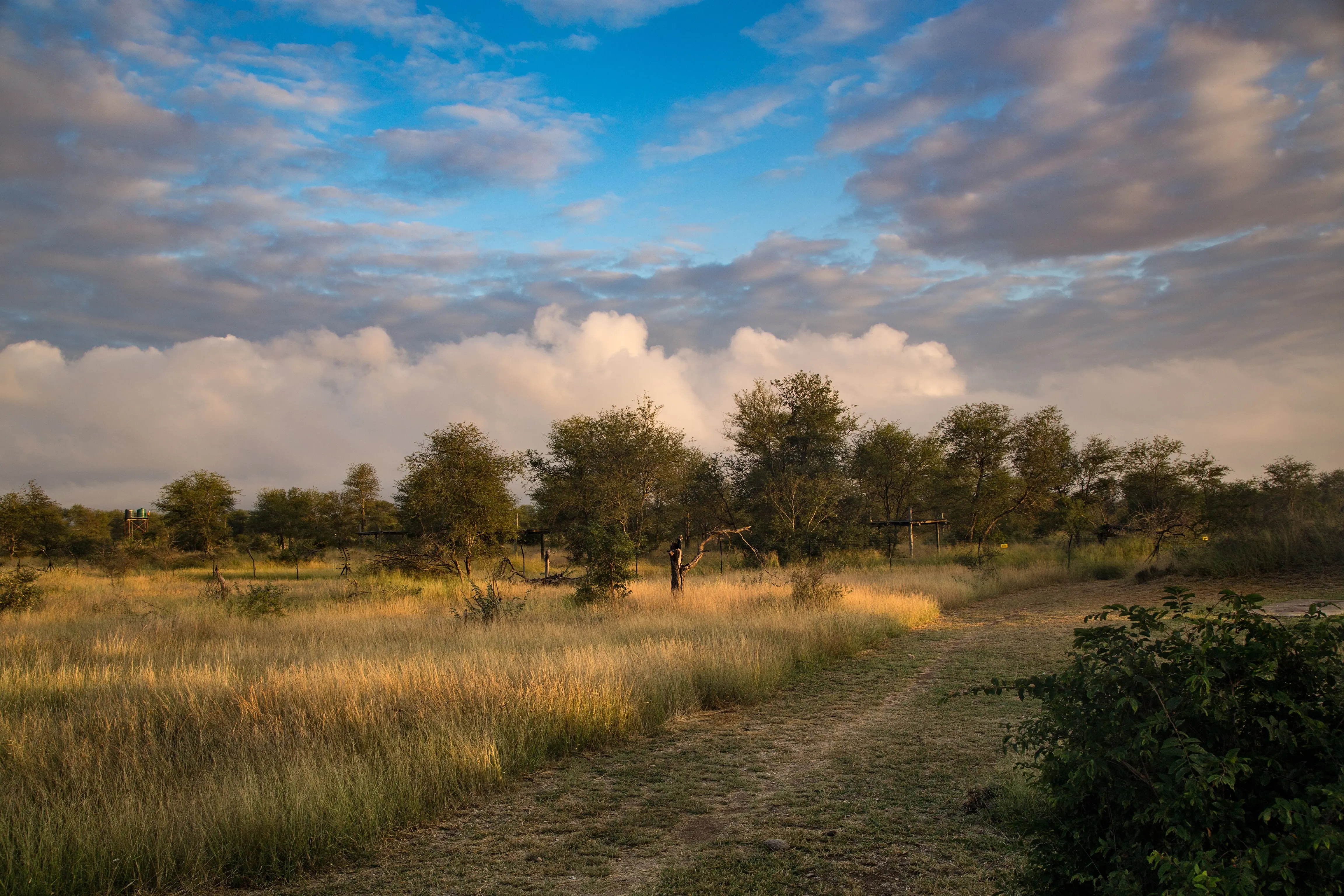
Flora
The park’s diverse fauna provides sustainable habitats for its exceptional wildlife in the form of food, shelter, and camouflage. While there are six ecosystems in Kruger, four main regions provide different vegetation for the animals. For example, the park’s central area is primarily covered with sweet grasses and leafy trees that support large groups of antelope, giraffe, buffalo, zebra, and wildebeest. The available prey in this area naturally attracts predators, including lions, leopards, cheetahs, and hyenas.
The far north region of the park boasts a more sub-tropical habitat. However, its lush vegetation is interspersed with red-pink sandstone outcrops and sizable sand deposits formed by river currents. This region attracts visitors interested in rare bird sightings, unusual frog species, bats, and even nocturnal bush pigs. Samango monkeys, Natal red hares, and yellow-spotted hyrax also inhabit this region.
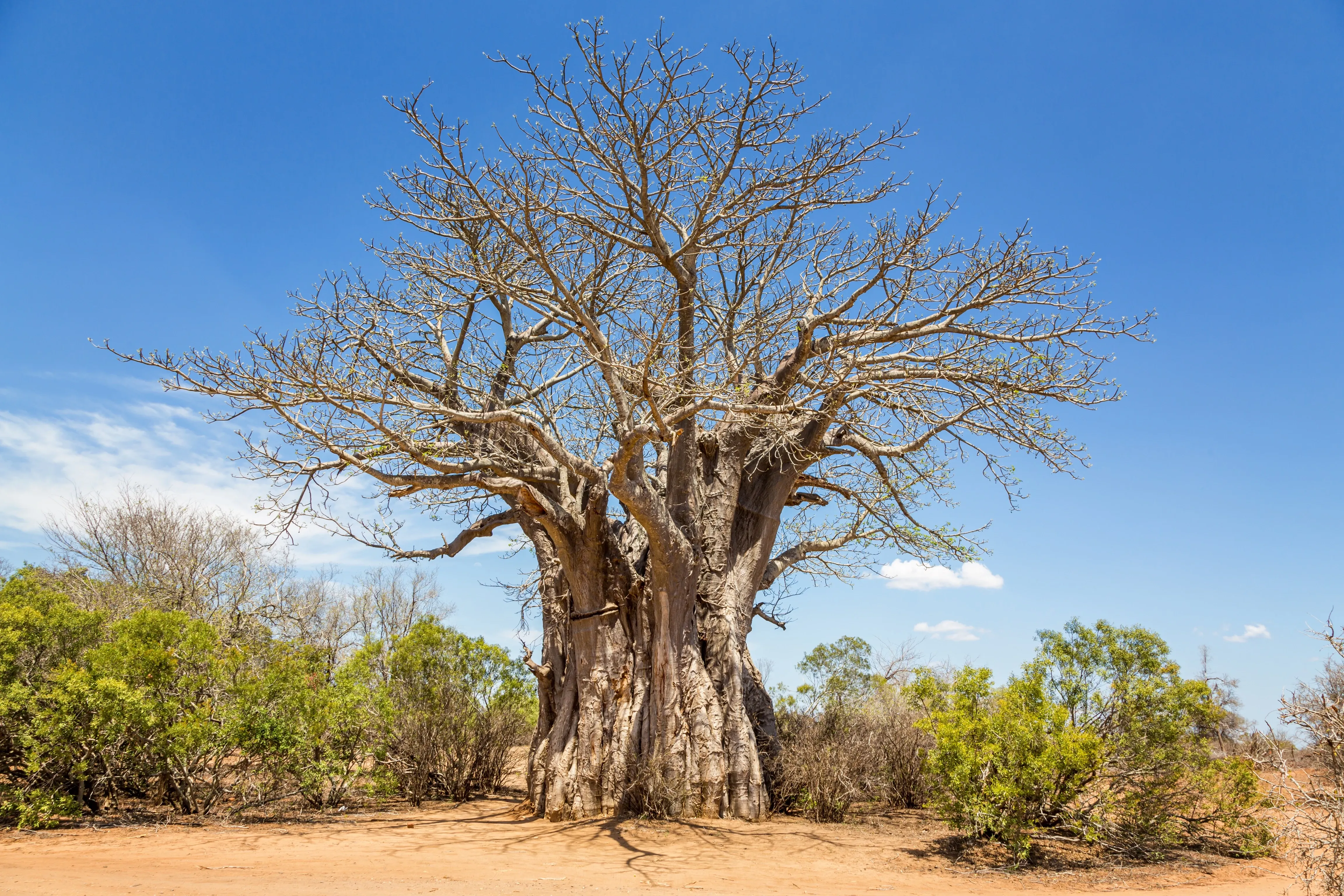
The region just north of the Orange River is semi-arid and receives very little rain. Mopane shrubs mainly compose the vegetation here. However, nyala, sycamore fig, tamboti, and apple-leaf trees also thrive in this area, thanks to the rivers that sustain them. Furthermore, these waterways provide habitats for up to 60 % of the park’s hippopotamus population. They are also critical hydration sources for elephants, buffalo, impala, kudu, bush pigs, and other animals.
High mountains and deep valleys characterise the park’s southern area, between the Crocodile and Sabie rivers bordering Mozambique. Here, you will find trees not seen in other park areas, including Cape chestnuts, coral trees, and lavender fever-berry trees. The granite covering most of this region lends itself to rocky hills called ‘koppies’. Baboons, buck, and hyraxes are common inhabitants of these outcrops, while leopards, though rarely seen, are also present. The highly endangered white rhinoceros is also present here. Furthermore, the woodlands in this southern region shelter giraffes, buffaloes, zebras, elephants, and occasionally cheetahs and wild dogs.
»The Kruger National Park is home to the only viable wild dog pack in South Africa and the highly-threatened rhino.«
Conservation at Kruger Park
Since its inception, Kruger Park’s conservation management has been part of its mandate. Some of the most pressing concerns include preserving fragile habitats and endangered species, particularly rhino and elephant poaching. To this end, park authorities have directed an impressive amount of resources towards controlling wildlife poaching. Poachers hunt these animals for meat, body parts, or for illegal wildlife trade. Park officials on the ground are a critical component in the war against poaching. These phenomenal individuals often track poachers through the night and risk their lives pursuing wildlife conservation.
However, in 2013 the park instigated a programme that harnessed high-tech solutions to alleviating poaching. These automated systems include drones and helicopters that can spot poacher activity from above. The reserve has introduced automatic movement sensors at borders to deter poachers from neighbouring countries. The programme has had some success in controlling the scourge to date. However, it is an ongoing problem with poachers sometimes using state-of-the-art technology themselves.
Additionally, water pollution through toxic waste from surrounding communities or agricultural areas is a problem at Kruger Park. Contaminated water has a detrimental effect on the park’s wildlife and vegetation. Other pollution problems include light source management at rest camps or nearby towns. Furthermore, unnatural lights disturb the nocturnal wildlife and interfere with nocturnal predators’ natural hunting patterns.
Another major threat to Kruger Park’s animals and long-term sustainability is the possible development of large communities near the park's borders. However, this much loved and respected wildlife sanctuary has a place in hearts throughout South Africa and across the globe. With the ongoing efforts and support of committed conservationists, nature lovers, and anti-poaching units, this exceptional reserve will hopefully retain its magnificence for decades to come.
Source references:
Kruger Park - Siyabona
Sign up for the newsletter
By clicking on “Subscribe now” I will subscribe to the Conscious Explorer newsletter with all the information about mindful travel. Information on the success measurement included in the consent, the use of the shipping service provider MailChimp, logging of the registration and your rights of revocation can be found in our privacy policy.

